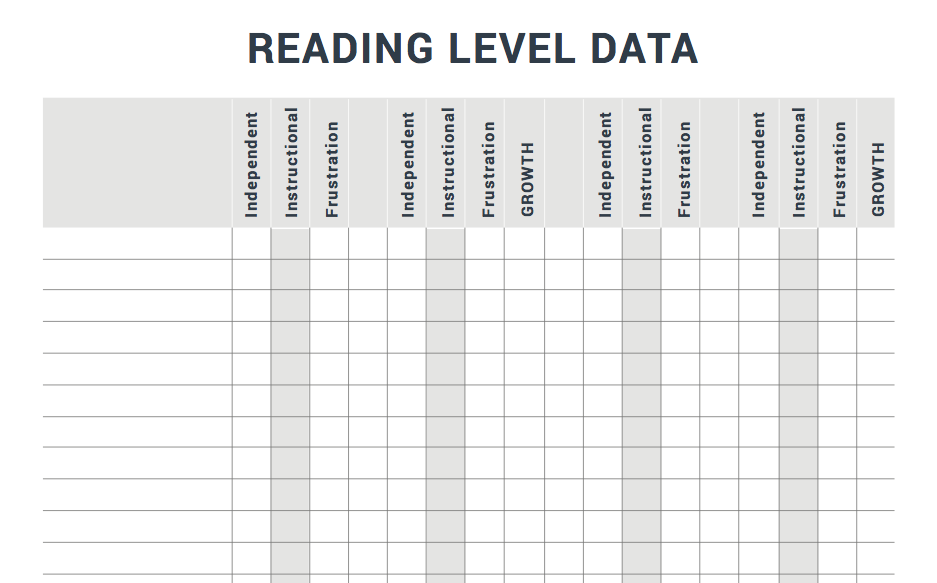Keeping Track of Growth
Join Our Community
Access this resource now. Get up to three resources every month for free.
Choose from thousands of articles, lessons, guides, videos, and printables.

We are often asked how we keep track of student progress and growth. We use a simple reading data sheet to record independent, instructional, and frustrational reading levels. Though we don’t often organize small groups by these levels, it is important data that our administration are keenly interested in.
We use good diagnostic assessments to evaluate most of our students three times a year (and assess informally daily). Students who are performing below grade-level expectations are assessed once a month so we can, in a timely manner, evaluate whether our interventions are making a difference.
Keep track using our online conferring notebook, ConferringNotebook.com, and save a tree. Or print the sheet we use in a paper-and-pencil conferring notebook. We input measurable assessment data to create a quick, concise peek at the status of the class and individual progress toward goals and standards. By comparing the first instructional level with the last, we can easily measure total growth for the school year. It isn’t uncommon for our students to make one or two years’ growth when they are given extended periods of time to read self-selected books and intentional instruction and support based on their needs. This chart makes that information clearly visible and often becomes a springboard of celebration.





